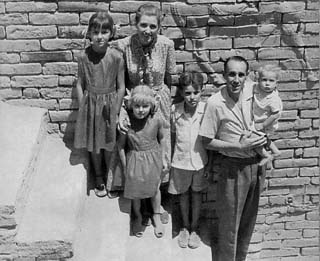About us

|
| The family standing on a stairway in the Ishtar Gateway in Babylon in 1958. |
I have been interested in archaeology ever since 1958 when, at the age of nine, I was taken by my parents on an epic trip from India to England and back again. We travelled in a home-made caravan pulled by an under-powered Willys Jeep, passing through countries and places that are off-limits today, such as Afghanistan, Iran and Iraq. We spent nine months on the journey and covered 21,000 miles, visiting as many of the important archaeological sites as possible.
From then on I began to consume a steady diet of archaeological source books such as Layard's Discoveries at Nineveh and Woolley's Excavations at Ur, as well as travel books, archaeological journals and excavation reports. I have been back to the Middle East many times, travelling on my own account or leading tour groups. I have taken part in excavations at a number of ancient sites, including the Western Wall at Jerusalem.
Early on in my reading and study I became aware of the problem of identifying the pharaoh of the Exodus. The puzzle was intriguing as an historical mystery and challenging to me as a Bible-believing Christian. I have toyed with different solutions ranging from an outright rejection of the historicity of the Bible, through Hatshepsut as Moses' step-mother, and finally found satisfaction in the solution which is tentatively proposed on this website. I certainly do not claim to have solved every problem associated with this question and may even be completely wrong, but I believe that the suggestion advanced by men such as Dr Donovan Courville, Dr David Rohl, Dr Peter James, and even the eccentric Emmanual Velikovsky, is worth consideration.
For those in a hurry, there is a simple but fairly detailed explanation suitable for young people on this website.
In compiling this site I have drawn on my own wide-ranging experience and research and used many of my own photographs, some of which are half a century old and show a now vanished age when the Middle East still greatly resembled the land and customs familiar from ancient times and Bible stories.






